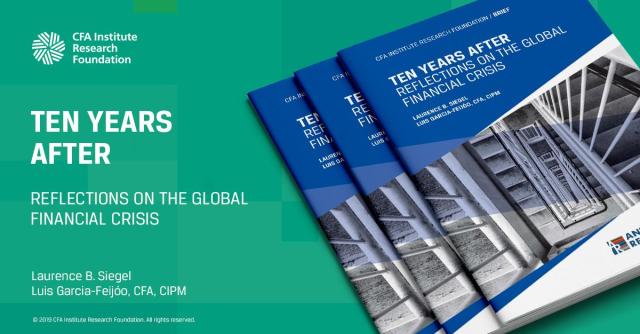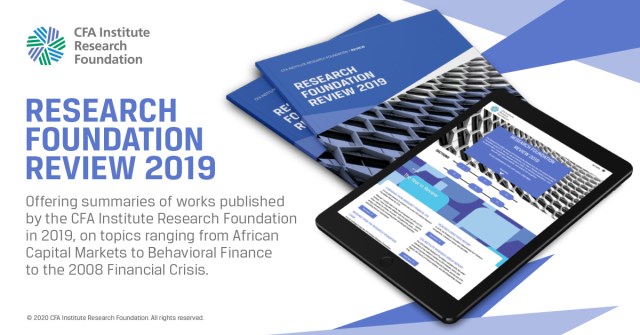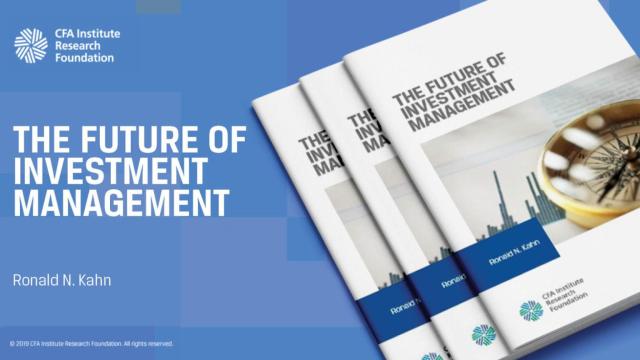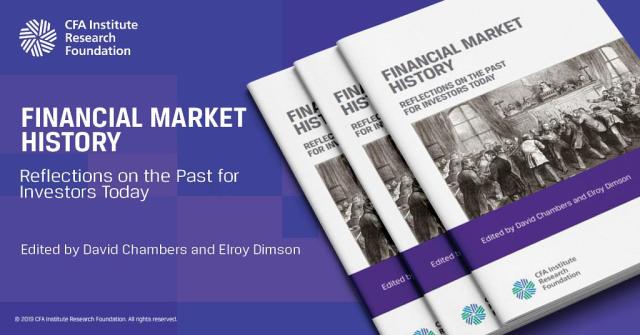[ad_1]
“U.S. GDP will contract 30% in second quarter.”
Thus blared an 8 April headline from Reuters, apparently intended to sow as much panic as possible.
In the Great Depression, real GDP shrank by about 27% from the 1929 top to the 1933 bottom. So the Reuters headline heralds what amounts to the worst news in US history, if it’s taken at face value. Holy cow.
Of course, we should not take it at face value. In fact, a note in small print below the headline reads:
“This April 8 story corrects to clarify that 30% contraction is the annualized rate.”
Whew! That’s only a 7.5% contraction in one quarter, a little more than the top-to-bottom contraction in US GDP during the global financial crisis (GFC) of 2007–2009. Not good, but not the end of the world.
We asked Edwin Burton, a delightful friend and curmudgeonly senior faculty member at the University of Virginia, why he, too, announced the quarterly GDP change in annualized terms. He wrote back, “I am well aware how these are quoted. So is my audience [of professional economists].” We then asked whether one might divide by four to communicate with a general audience. He replied, “No one in the media ever divides by four, ever.” (Our next paper will incorporate some of Ed’s ideas in a more positive light.)
The problem for consumers of the news media is that when a story bleeds, it leads. It sells more newspapers — or eyeballs, or whatever is being sold on the internet — by stating quarterly rates of change as annualized ones. Why? Simply because the numbers are bigger — as long as the results aren’t too ridiculous. That’s why we don’t quote stock index changes at annualized rates: The Dow Jones Industrial Average rose at an annualized rate of 169,305% on Friday, 20 April — it really did!1
But enough about units of measurement. Why do we have GDP data in the first place? Why do we fixate on GDP rates of change, actual or annualized, and unemployment? Both are amazingly imprecise measures of all the commerce transacted across the 3.8 million square miles and 330 million people that constitute the United States and its territories. Where did these measures come from? Can they really be accurate enough to justify reporting them to one decimal place? Let’s briefly review their histories.
A Brief History of GDP and Unemployment Measures

During the Great Depression, economists struggled to figure out what was going on. They used measures such as railroad car loadings to assess the progress (or retrogression) of the economy, but these metrics were obviously incomplete.
This situation was partially remedied between 1931 and 1934, in the depths of the Depression, by Simon Kuznets, a Jewish immigrant from Byelorussia, now Belarus, who taught at the University of Pennsylvania. Kuznets developed a method of “national income accounting” that added up the volume of all the transactions in the economy over the span of a year, as best as that could be gauged using the data available to the Federal government. This sum was called gross national product (GNP), from which GDP was later derived.
Kuznets’s measure turned out to be quite useful for assessing the economy’s long-term growth rate. Over short periods, say quarter to quarter, it is less accurate and more “noisy” because it’s impossible to keep track of all the transactions in an economy as large as that of the United States. Kuznets was honest about the method’s shortcomings, stating that “the welfare of a nation can scarcely be inferred from a measure of national income.” Still, with nothing else to work with, economists found GNP a vast improvement over the primitive tools they had been using to understand the mystery of the economic collapse.
After World War II brought an end to the Great Depression, Congress took upon itself responsibility for economic well-being, as measured by employment, production, and purchasing power, through the Full Employment Act of 1946. (For a fuller description of this period, see our earlier article.) To assess how well it was fulfilling this responsibility, Congress dictated that GDP, unemployment, and consumer price measures be used. While generally well thought out, these measures are still very crude and imprecise indicators of economic performance and there is a vast literature on their weaknesses, especially unemployment and consumer price measures. Nevertheless, they govern how our elected leaders in Congress and our unelected leaders, like those in the US Federal Reserve, choose to “manage” our economy and dominate our assessment of how well they are serving us.
What’s different this time?
In a true crisis — a sudden stop like the present situation — slow-moving and usually helpful measures like GDP, unemployment (whatever the measure, U-1 through U-6), and the CPI-U2 are rendered meaningless. Why? Because conditions on the ground change much faster than any of these numbers do.3 The novel coronavirus (SARS-CoV-2) and the random, rapidly growing blooms of acute respiratory illness are a true crisis.
What’s so different about this particular crisis? The United States and almost all of our trading partners pulled the emergency brake to stop the spread of the virus and halted a stunningly large swath of everyday life.
The decline in economic activity due to the lockdown is almost certainly much more than 7.5%, yet most of the now-empty jobs and businesses are still there, waiting for the lockdown to end so that measured GDP snaps up about as quickly as it fell — we hope! This is no ordinary recession or depression, and it cannot be measured by ordinary means.
GDP and the other numbers were created to assess the damage from a horrific mismatch between labor supply and labor demand. In the 1930s, millions and millions of able-bodied men and women wanted to work but couldn’t. They had been cast adrift by a downward economic spiral when the internal functioning of the industrial system and its banks, both private and central, were terribly out of sync. GDP measures can capture such relationships — that’s what they were designed to do in the first place! But they are not intended to calculate the impact of a lockdown.
We don’t need GDP numbers to know the effect of the lockdown: 45 of our 50 states, and practically all of our trading partners, stopped us from eating at restaurants (and then maybe going to the gym to work it off), having elective surgery for a bum knee, sending our kids to school, or having our teeth cleaned. Effectively, the lockdown became a ban on living everyday life. And, for scores of millions of Americans, it meant no work and no income.
For businesses from airlines to multi-generation family-owned stores, it’s the end of the road. In the timeless words of the actor Jimmy Stewart as George Bailey in It’s A Wonderful Life: “It means we’re ruined . . . bankruptcy.”
The Policy Response
Instead of a supply-demand mismatch, we now have a massive solvency and liquidity problem that requires a different set of measures. The Fed can see payroll numbers, business revenues, and other useful information that its needs. But this is not GDP and unemployment data.
The Fed and Congress have responded to the crisis with unprecedented liquidity and lending programs. The Fed and the Federal government’s emergency response has been rapid, broad-based, and gigantic. It still may not be possible to prevent a short, sharp depression, but these actions will help many avoid bankruptcy and ruin.
What matters immediately is cash flow until the lockdown ends. After that, we need to know how much damage was done — the lost jobs, closed businesses, bankruptcies, failed municipal budgets, shuttered schools and colleges, and all the other aspects of everyday economic life that have been put in suspended animation. To that we’d add the toll in human health exacted by the extreme stress and lack of activity while in confinement.
With these facts in mind, let’s turn to unemployment, one of our three main concerns. (Business bankruptcies and profoundly impaired tax receipts are the two others, but we haven’t space to address them all here.)
Unemployment: Why the Numbers Are Real But Meaningless
“22 million have lost their jobs over the past month — real unemployment rate likely nearing 18%.”
That’s a headline from Fortune, another reliable source.
Sadly, these numbers are accurate. They are not stated in misleading units. They are a stark assessment of extreme loss in a very short period — and those absorbing the losses are mostly helpless to do anything about it.
But the numbers are almost meaningless for gauging longer-term US prospects, or even the current state of the economy. They do not reflect the supply and demand for labor.
Unemployment usually means that people want to work but employers can’t find anything for them to do, or can’t afford to pay them. This time really is different. Most people want to work but they are not allowed to. Their employers would love to have them back and could pay them if customers were allowed to frequent their businesses. It is a Gordian Knot that Alexander the Great is not available to cut.

What has been destroyed in this crisis? The buildings are there, the human capital is there, and most of the financial capital is still there. It’s the social capital that is impaired, but only for a while. We will get through this, but only if the worries we enumerate below do not come to pass.
In other words, the jobs aren’t “lost.” Many of them will come back right away when the lockdown abates. Others will take longer. Sadly, some businesses will not recover. Some would have failed anyway, but many vibrant enterprises that won’t be brought back wouldn’t have. This contrasts with the usual meaning of “lost jobs” — those rendered unnecessary and unlikely to return due to a change in technology, industry consolidation, or foreign competition. That is not the case in the current crisis.
Living like the Germans
Can we withstand a loss of two months’ national income? A bit of economic history tells us that we can.
German workers work about as many hours in 12 months as Americans do in 10, and earn a commensurately lower income.4 They seem happy with their economic situation, which is the envy of much of Europe and the world. So, how far back do we have to go to find a time in our history when we earned what Germans do now? Only to 2004, with a dip back down to that level again in 2009.
Times were good in the United States in 2004. If we have to retrench to 2004 levels of income to defeat the coronavirus, that is not a sacrifice on the scale of what was asked of our grandparents when they had to fight World War II. And if GDP does dip that far, it will probably come roaring back on a new, faster growth path from that lower level. It will be faster because of pent-up demand and cheap supply: low oil prices, a large labor force eager to get back to work, and so forth.
What Keeps Us Up at Night
So that is not our main worry. Our chief worry is that, through bad policies, much of the capital — human, social, and otherwise — that a strong recovery requires will be destroyed. As we said, almost all of that capital is still there, waiting to be used. But it will not remain there, in good shape, forever.
- A recession transfers ownership of businesses, real estate, etc., from weak hands to strong hands. This is the engine behind the magic of creative destruction, productivity growth, and the bounty of long-term economic progress. But in a depression, there are no strong hands. The current situation is obviously, at minimum, a short, sharp depression. But if it stretches out in time, few people will have the capital to take over failed businesses and get the economy moving quickly.
- People who are unemployed for a long time become demoralized and lose their skillsets.
- It will be hard for governments to pay back massive new debts, as necessary as they seem to be. (It would have helped to go into this crisis with much less accumulated debt from the past.) This means higher taxes and consequently lower after-tax income growth in the future, especially for the young.
- We — even most economists — do not fully understand all the linkages in our economy. Because of the transportation collapse, oil has become absurdly cheap, putting another 150,000 people out of work in the United States. They are (or were) highly paid, so whoever was selling them stuff may be out of work too. This is how a recession turns into a depression: The self-correcting mechanisms, such as bargain shoppers buying airline tickets and taking driving vacations when prices are low, have been taken off the table. As a result, downward price spirals feed on themselves and spread more widely instead of being self-limiting.
- We face some financial infrastructure problems. For example, if people don’t pay their mortgages, the mortgage system will break down. That will make it harder to obtain a mortgage for years to come, inhibiting the real estate recovery that we’ll desperately need.
- We also face physical infrastructure problems. An electrical engineer writes that the power grid has been massively disrupted by people working from home instead of in offices and factories. The grid operators whose job it is to manage these shifts are sequestered on site. They are eating and sleeping at the control centers (at least in New York State). They are at their wit’s end. A coronavirus outbreak among these operators could mean power outages for millions.
Concluding Thoughts
Medically, as Drew Senyei, MD, said in our 6 April interview, we will get through this: What we are seeing is typical of the epic battles between viruses and human beings throughout history — and we’re still here. But economically, there are no guarantees. The effects of the lockdown are not linear. They worsen at an accelerating rate.
A two-week lockdown is like a long, boring vacation, unless you are poor. Though even then, over such short periods, there is plenty of charitable aid to go around.
A two-month lockdown is a monumental pain in the neck and implies a return to 15-year-old living standards.
A two-year lockdown would send us back to the Dark Ages.5
We cannot allow that to happen.
1. Friday, 20 April 2020 was an unusual day, with the Dow rising 2.99%. Compounded over a typical year of 252 trading days, that’s an annual rate of return of +169,305%.
2. The CPI-U is intended to measure inflation for all urban consumers. Among other unrealistic assumptions, everyone is measured as renting their home!
3. We know, or used to know, some of the people in government agencies who compile these numbers. They are completely unbiased and uncommonly diligent. They are not the problem. The measures themselves are the problem.
4. According to the World Bank, Germany had a per capita, purchasing power adjusted (PPP) GDP of $53,075 in 2018. The comparable figure for the United States was $62,795.
More insights from Laurence B. Siegel are available on his website. For correspondence, he can be reached at [email protected].
If you liked this post, don’t forget to subscribe to the Enterprising Investor.
All posts are the opinion of the author. As such, they should not be construed as investment advice, nor do the opinions expressed necessarily reflect the views of CFA Institute or the author’s employer.
Image courtesy of Dinfinite2011. (20 March 2020, When Chicago Came to a Stop, Cropped.)
[ad_2]
Image and article originally from blogs.cfainstitute.org. Read the original article here.






